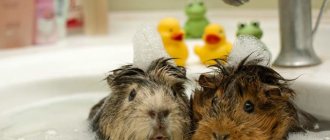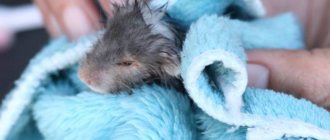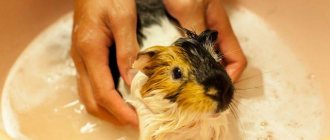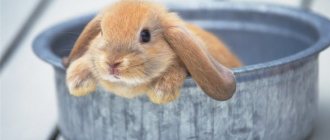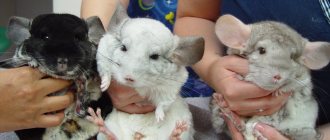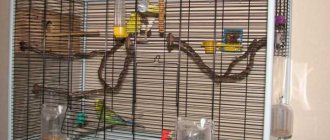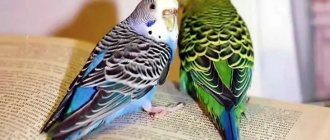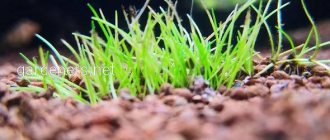Bathing a tame parrot is a refreshing, hygienic procedure that should be carried out in the warm season. The frequency depends on the mood and desire of the bird. In their native lands, birds splash around in the tropics in any weather. It rarely rains here, but parrots love to rinse themselves under a small waterfall or puddle. Such procedures prolong life and create a favorable environment for the mating season. In this article we will look in detail at how to bathe a budgie for the first time, so as not to scare it.
Why bathe a bird
The motley pet prefers to lead a neat lifestyle: it cleans its feathers every day, watches its reflection in the mirror, washes itself, smoothes its tail, and straightens stuck feathers. To keep the feathers from getting wet, the bird is ruffled and then shaken. The parrot carries out general bathing with its head on its own. Pets love to dive into a cool, refreshing bath on a hot, sultry day. The purposes of bathing depend on the types of pollution. After all, dry cleaning with a beak does not help if:
- Feathers are contaminated with fruit juice.
- Strongly stuck together under the influence of paint and oil.
- The skin is very itchy.
- The effect of dry air on the bird's body leads to a desire to freshen up.
- The bird wants to play in a small pool.
In the autumn and winter seasons, it is not recommended to bathe birds in order to avoid the development of colds.
How to wash a parrot from vegetable or vaseline oil so as not to mentally and physically injure the bird? You need to purchase Ciamax from a veterinary pharmacy - a drug in powder form that removes toxins from the body. But the point is different, veterinarians recommend sprinkling the powder well on the bird’s body, waiting 15 minutes, then using a toothbrush to clean the fused feathers. Instead of the drug, you can take a pinch of flour or starch and repeat similar steps. The third way is to carefully bathe the bird with a special shampoo for parrots (sold in veterinary pharmacies), and then limit the effect of drafts.
How to teach a parrot to bathe
To quickly teach a bird to bathe, it is not recommended to suddenly start with wet procedures. Initially, you need to arouse the bird’s desire, for example, put the parrot’s cage near the washbasin and turn on the water; the pet may not become interested right away, and will slowly get used to the murmur of the water stream. You can sprinkle a small amount of water on the bird and evaluate the reaction.
When the bird gets used to it and is not afraid of water, it is recommended to place a shallow container with warm water, 2-3 cm deep, in the cage or in an open space. Bring the pet to the container, place toys, and let him get acquainted with the new way of playing. If the pet does not want to, and turns up its beak, it is not recommended to use coercive measures.
The main problems that arise when bathing budgies
The problems that most often arise when washing budgies are the following:
- It is necessary to carefully protect the bird from colds . Since feathered friends are very sensitive to drafts, they can easily catch a cold even in the summer. Especially if the cage is near an open window. At the first signs of a cold, you need to contact a veterinarian who will prescribe adequate treatment.
- Water or detergent getting into the bird's nostrils. In this case, the pet must be carefully turned upside down and held in this position, but no longer than 10 seconds.
- Some budgies, after bathing, begin to actively scratch their feathers , which is mistaken by bird owners for a disease. But there is no need to worry - this is a natural reaction of birds, this is how they bring their beauty to perfection.
Trust between the owner and the bird, patience and perseverance will help to introduce the pet to water procedures and make them fun for both the pet and his friend - the owner!
Bathing at home
How to bathe a parrot without harming the psyche? The procedure should be associated with pleasant emotions. To lure the bird into the water, you need to put several toys and pebbles in the container. It is recommended to make a fountain or adjust the flow of low water pressure from the shower head.
The bird may not immediately intrigue you, so you shouldn’t rush things. If, despite all efforts, the pet is afraid to enter the water, it is recommended to limit itself to sand baths or the use of flour and talcum powder. Bathing a pet is a favorite procedure for owners; splashing in warm water brings joy to both the pet and those watching.
Basic Rules
Optimal room and water temperature, comfortable swimming suit are important factors that are recommended to be observed. This will reduce the risk of developing immune system instability. Otherwise, the bird will catch a cold and get sick.
Weak drafts should not be allowed; all windows and doors must be closed, and, if necessary, the cracks in the walls must be filled with clay. The optimal room temperature should be between 22-25 degrees. Parameters can be measured with a children's water thermometer.
It is recommended to pour water up to the parrot's abdomen.
Preparation for the procedure
The owner will definitely want to see the delight and joy of the bird; you should purchase small toys with which the bird will have fun, sold in pet stores.
You can focus on small household items: a pencil, a clothespin, small hard balls, plastic toys from Kinder Surprise, etc.
Possible difficulties
It is necessary to monitor the water temperature; long swims of more than 30 minutes are excluded. Sometimes parrots refuse to come out and when they try to take them out of the bath they chirp loudly. If the water has cooled down, you need to periodically add hot water, monitor the temperature, pour carefully so as not to scald your pet’s legs and wings.
How to bathe
Shampoos are sold especially for parrots in pet stores; they can be used no more than once a week, as they contain chemical components in minimal quantities. To wash the bird well, you need to wet the feathers a little, apply a drop of shampoo and foam the product with gentle movements (do not let the bird remove the foam with its beak or swallow the soap solution). Then thoroughly rinse off any remaining substance with warm water.
In a bathing suit
Stores sell special containers for bathing - baths, boxes. If desired, the housewife can make the device with her own hands. Use shallow saucers. They must first be taken away and marked so as not to be confused with the main service intended for guests. When purchasing, you should pay attention to the size of the swimsuit; the height should not be higher than the pet’s height, otherwise the bird will choke.
Using a spray bottle
Refers to the simplest method, creating an artificial fountain effect. Compliance with several conditions will help prevent unpleasant consequences after the procedure.
Rules that are recommended to be followed:
If your pet is shy or sees how a spray bottle works for the first time, you should not start bathing with a powerful stream of jet. You need to press the piston a little so that the water, under weak pressure, rains down onto the bird.
- The duration of the procedure is up to 15 minutes.
- It is recommended to spray the liquid at a distance of 30 cm, not sharply.
- Before bathing, you can remove the feeder.
- The water should be at a temperature of up to 25 degrees.
- You should not use a spray bottle if the parrot is naturally shy and afraid of something new.
You need to bathe the bird once a week. The stores sell various devices for water procedures. The pet prefers to splash for 10 minutes.
In the fountain
You can build a fountain with your own hands, for this you will need a container of size: 20 * 15 (approximately), depth no more than 2-3 cm, and a hose with a diameter of 1-1.5 cm, which is attached (with electrical tape) to the wall of the structure, there must be a hole, removing water. You can put small pebbles on the bottom. Connect the hose to the tap and adjust the flow of warm water. The parrot will run under the water on its own and swim.
Second option. Turn on the shower at low power, pour a little water into a container (without a hole) and point the head with the incoming water at the bird.
Watch how your pet will admire and indulge.
In the wet grass
You can take the bird outside, after making sure that the air temperature is at least 22 degrees, moisten the grass with warm water from a spray bottle, remove the lower part of the cage, and place the structure with the parrot on the grass. Monitor the bird's reaction.
In sand
In cold weather, it is recommended to replace the water in the bath with organic sand. The birds will happily frolic and relax. The procedure helps prevent parasites (flea mites). Sold at any pet store. Bathing in the sand improves tissue trophism, helps alleviate the general condition during molting, and eliminates itching.
In talc
Talc is a light, fine powder often used in bathing procedures. The substance is sold in pharmacies, should not contain additional ingredients, the presence of chamomile is allowed. Sprinkle the feathers with talcum powder, then the pet will independently cleanse itself of dirt.
Instead of talcum powder, you can sprinkle a little flour.
What can you replace water with?
If your house is very cold, you are in the process of getting used to water and your parrot is simply afraid of it, then you should buy mineral sand. It will be a good alternative; in the future you will be able to combine sand and water treatments.
It is worth buying sand from a trusted place so that you can be sure of its purity. Sand should be placed in a container or a special bathing suit and toys should be placed in it. Usually the birds quickly become interested in what it is and begin to bathe in the sand.
How often to bathe a bird
How often you can bathe parrots depends on the mood, temperament, and character of the bird. If your pet loves to swim, it is not recommended to limit him in his favorite hobby. But it is not recommended to keep a bath of water in the cage for more than 1 hour; this can cause the development of fungus, spoilage of food and drinking water. Therefore, you need to bathe your pet outside the cage. To do this, you need to spread an oilcloth on the surface of the table or on the wide seat of a chair, prepare a towel and give free rein to frolic to your heart’s content.
You can watch with interest for a long time how parrots wash themselves. This pleasant procedure should be carried out in warm water, bathing the bird only at room temperature, in order to avoid the development of colds.
Previous
Useful Lamps for all types of parrots and the right choice
Next
Useful Feeder for parrots in a cage
Preparation for the procedure
An important condition for carrying out water procedures is that the bird has a good mood and trust in its owner. For bathing, you need to prepare a small container of water or a sink.
Tips and recommendations for preparing your pet bird for a bath:
- The water must be warm and suitable for drinking, because... the bird may decide to drink it;
- It is recommended to bathe your pet in a dimly lit room so that he can relax;
- the distance from the edges of the container to the water should not be less than 2 cm;
- All windows in the apartment should be closed and the air conditioner should be turned off. You cannot wash your parrot at room temperatures less than 20 degrees;
- If the feathers are heavily soiled, add a special bird shampoo to the water. If you don't have it, you can use fragrance-free baby shampoo. For simple rinsing of feathers, chamomile infusion is suitable;
- When your pet tries to escape, you need to wrap yourself in a sheet or towel. During washing, the owner must hold the torso and the area in the cheek area;
- If a bird gets dirty in a sticky chemical, the feathers must be cut off if washing is impossible. During self-cleaning of the plumage, the pet may become poisoned. Do not clean feathers using solvents or other cleaning agents. They are very toxic and can cause the death of a bird.
